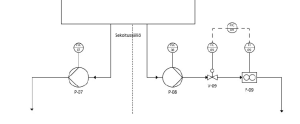Requirement Specification
335 405 500

The 3rd session: Please email me a link to the Onedrive where you have saved the source material (Word document) for approval! Give me editing rights to the file so I can make comments on it!
The source material is created according to the specification described in the book "Laatu automaatiossa" kuvatun määrittelyn Liite D: Mallidokumentteja, Käyttäjävaatimukset ("Quality in Automation", Appendix D: Model Documents, User Requirements, only in Finnish) pp 144-150, or if that is not available, based on the template on my website.
The project should include one PID controller loop with one analog measurement input and one analog control output! This requirement is because otherwise, throughout the entire course of study, there may not be an opportunity to work with a PID controller implemented with programmable logic.
Even though the PID control principle itself may already be familiar to you, implementing the controller in a PLC application is always challenging on the first attempt. This learning experience is much more enjoyable in a relatively stress-free learning environment than in a first job with the rest of the project team waiting. It would certainly be an unforgettable experience, not necessarily one you'd wish on anyone but your worst enemies.
The I/O space should lie within the following boundaries:
The Requirement Specification extensively describes the ordered system. The document must include at least the following sections:
 (Piping and Instrumentation) - use Visio and search for Piping and instrumentation diagram when creating a new drawing
(Piping and Instrumentation) - use Visio and search for Piping and instrumentation diagram when creating a new drawing
 Description of interlockings - in the written form and as logic diagrams, e.g.:
Description of interlockings - in the written form and as logic diagrams, e.g.:The orderer group is responsible for uploading the original Requirement Specification to Moodle. Send me an email when you have it saved and I'll check it and comment on it.
The deliverer group is responsible for updating the I/O list with I/O addresses and any other changes throughout the project.